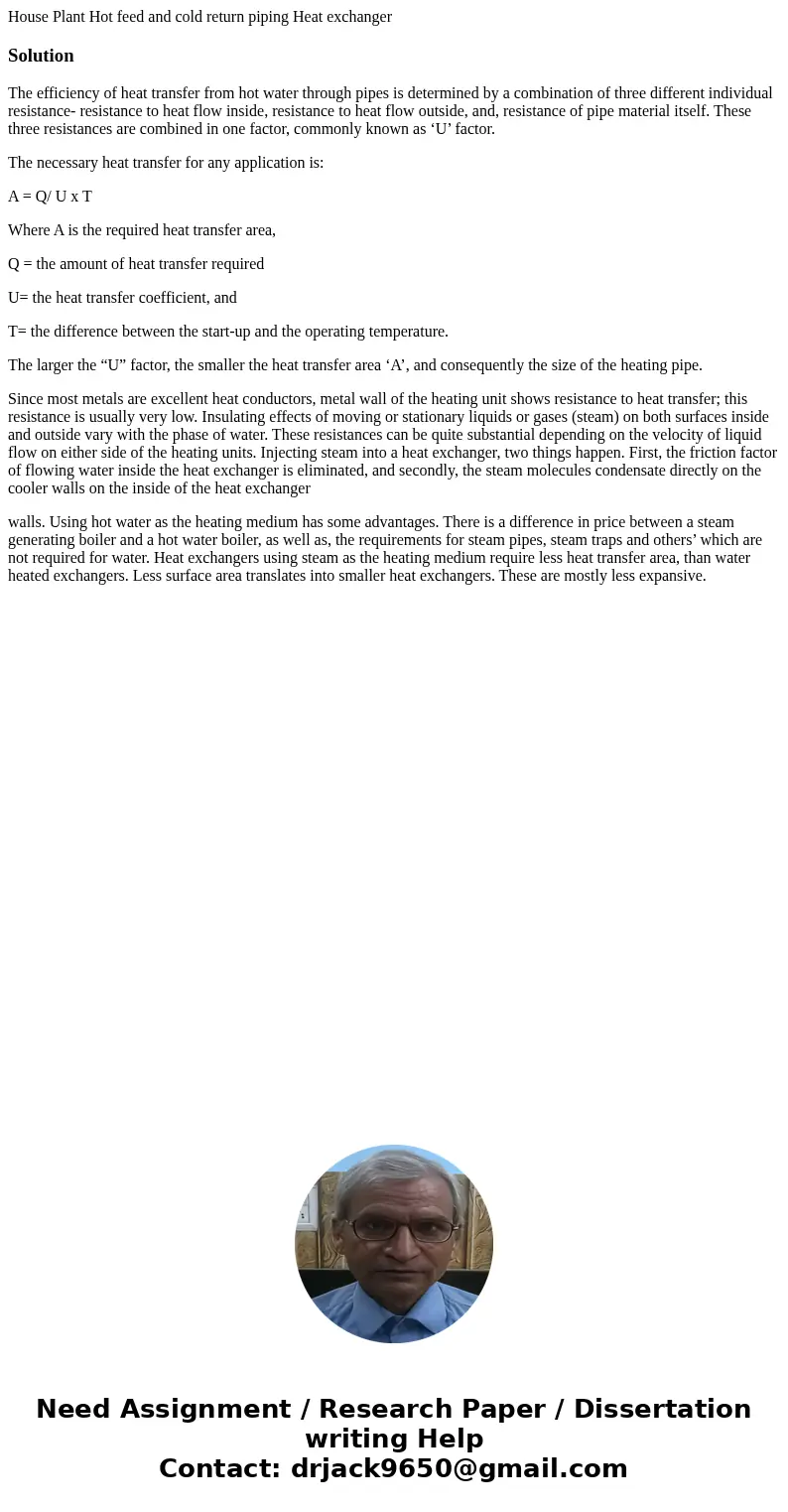House Plant Hot feed and cold return piping Heat exchanger S
Solution
The efficiency of heat transfer from hot water through pipes is determined by a combination of three different individual resistance- resistance to heat flow inside, resistance to heat flow outside, and, resistance of pipe material itself. These three resistances are combined in one factor, commonly known as ‘U’ factor.
The necessary heat transfer for any application is:
A = Q/ U x T
Where A is the required heat transfer area,
Q = the amount of heat transfer required
U= the heat transfer coefficient, and
T= the difference between the start-up and the operating temperature.
The larger the “U” factor, the smaller the heat transfer area ‘A’, and consequently the size of the heating pipe.
Since most metals are excellent heat conductors, metal wall of the heating unit shows resistance to heat transfer; this resistance is usually very low. Insulating effects of moving or stationary liquids or gases (steam) on both surfaces inside and outside vary with the phase of water. These resistances can be quite substantial depending on the velocity of liquid flow on either side of the heating units. Injecting steam into a heat exchanger, two things happen. First, the friction factor of flowing water inside the heat exchanger is eliminated, and secondly, the steam molecules condensate directly on the cooler walls on the inside of the heat exchanger
walls. Using hot water as the heating medium has some advantages. There is a difference in price between a steam generating boiler and a hot water boiler, as well as, the requirements for steam pipes, steam traps and others’ which are not required for water. Heat exchangers using steam as the heating medium require less heat transfer area, than water heated exchangers. Less surface area translates into smaller heat exchangers. These are mostly less expansive.

 Homework Sourse
Homework Sourse